
Become a member
Join today and help protect nature, beauty and history – for everyone, for ever. Enjoy access to more than 500 places with National Trust membership.
An atmospheric Tudor house with Medieval roots, a mill on a historic quay, a glorious garden with valley views and an expansive estate to explore.
St Dominick, near Saltash, Cornwall, PL12 6TA

| Asset | Opening time |
|---|---|
| House | Closed |
| Car parks | Dawn - Dusk |
| Estate and quay | Dawn - Dusk |
| Garden | 10:00 - 16:00 |
| Barn Café | Closed |
| Shop and plant sales | 10:00 - 16:00 |
| Bull Pen Gallery | Closed |
| The Edgcumbe Café | 11:00 - 16:00 |
| Cotehele Mill | Closed |
| Second-hand bookshop | 10:00 - 16:00 |
To allow us to complete conservation work in the house over the winter, the house will be closed from 6 January - 6 March. The house will reopen daily from 7 March.
| Ticket type | With Gift Aid | Without Gift Aid |
|---|---|---|
| Adult (18+) | £11.00 | £10.00 |
| Child (5-17) under 5s free | £5.50 | £5.00 |
| Family (2 Adults and up to 3 children) | £27.50 | £25.00 |
| 1 Adult and up to 3 children | £16.50 | £15.00 |
| Ticket type | With Gift Aid | Without Gift Aid |
|---|---|---|
| Adult (18+) | £7.70 | £7.00 |
| Child (5-17) under 5s free | £3.90 | £3.50 |
| Family (2 Adults and up to 3 children) | £19.30 | £17.50 |
| 1 Adult and up to 3 children | £11.60 | £10.50 |
Play areas located at the Cherry Orchard near to the main car park and within the car park at Cotehele Quay
Assistance dogs only in house, orchards and Valley Garden
Second-hand bookshop located in Retainers' Court by the house and within the information point at Cotehele Quay
The Barn Cafe (by the house) serves lunches, light bites, cakes, and hot and cold drinks. The Edgcumbe (at Cotehele Quay) serves hot and cold drinks, light bites and cakes
Three car parks available at Cotehele. Use the upper car parks when visiting the house or the lower car park for visiting the quay and mill
Cycle parking available close to Visitor Reception near to the house and garden
Dogs welcome on estate walks, within the cafe and The Edgcumbe. Well-behaved dogs on a short fixed lead are allowed in some areas of the garden as part of a trial over the winter . We are unable to permit entry to dogs who are on a extendable lead, we have short fixed leads available to borrow.
Ice cream kiosk located by farm yard toilets, open seasonal (weather permitting)
Picnic area located by the Cherry Orchard play area near the main car park and by the pond dipping platform at Cotehele Quay. Picnics welcome across the site, but please take your litter home.
Plant shop located next to the shop and gallery. Please pay for items within the shop.
Shop and gallery with a range of gifts and souvenirs available.
Toilets available by reception, at the quay and within the garden near the bookshop. Baby changing is available in all toilets
Disabled car park closer to the garden. Two accessible toilets, in farmyard and on quay. Shuttlebus operates between house, quay and mill, please check if operating on day of visit. No Changing Places facilities. Dogs on leads allowed on the estate paths, and on short-leads in some areas of the formal garden. Assistance dogs are welcome in all areas.
Garden partly accessible. Map of accessible route available from visitor reception
Adapted toilet located next to the Farm Yard toilets near Visitor Reception. There are no changing place facilities at Cotehele. Nearest facilities are located at Abbey Rise Day Centre, Tavistock, PL19 9AS (open 24 hours, access via Radar key).
Accessible parking spaces available within the farm yard car park
Drop-off point located by Visitor Reception (for the house and garden) and by the Discovery Centre (for the quay).
Fixed induction loops are available at visitor reception, cafe, The Edgcumbe, shop, gallery and mill
Level access to the cafe is available via the rear of the cafe behind Visitor Reception
Level access to shop is available via the rear of shop behind Visitor Reception
Narrow corridors and steep steps within the house. Please leave large backpacks in the lockers within Hall Court (free of charge)
Powered mobility tramper available to hire. Booking essential, call 01579 351346 to book.
Ramped access available to the shop, gallery and house
Be careful of uneven cobbles within Retainers' Court whilst visiting the gardens
Two manual wheelchairs available to hire by calling 01579 351346
Main Car Park - what3words: ///could.visual.shadowing
We hold the Good Journey Mark for welcoming car-free visitors. Travel a greener way and enjoy a free hot drink with a valid bus or train ticket, or cycle helmet. Collect your voucher from Visitor Welcome by the house.
Plan your journey by train, bus or cycle at Good Journey.
The Tamar Valley Trainline (GWR, D5) provides a two-hourly service between Plymouth and Gunnislake. Either alight at Calstock Train Station and follow the 1½ mile walk, signposted from the station, along the River Tamar and up a steep hill and through the woods, or you can catch the ferry from Calstock Quay to Cotehele Quay. Alternatively alight at Gunnislake Train Station and follow a 2 mile unmarked route to Cotehele.
If you wish to get a taxi from the train to Cotehele, it’s best to pre-book a taxi as there is no taxi rank at either station
Plan your train journey on the Tamar Valley Line on the Great Scenic Railways website
From Calstock, Ferry Farm, the Calstock Ferry is available to visitors, providing a service along the scenic waterfront of the village to Cotehele Quay. Depending on ferry times, they can return to Calstock by ferry or by foot.
We advise visitors to check the Calstock Ferry website for the timetable ahead of travelling. Visit Calstock Ferry for timetables and ticket information. To avoid waiting for the ferry either at Calstock or Cotehele Quay call the ferry on 07783 432280 to ensure prompt collection.
From the Barbican in Plymouth, Plymouth Boat Trips run a cruise a few times each month, starting in Plymouth and along the River Tamar towards Calstock. Passengers can stop off at Cotehele Quay. Passengers have approximately 1½ hours to explore Cotehele if they wish to return to Plymouth using the ferry. Visit Plymouth Boat Trips for details on timetables and ticket prices.
Tickets for this ferry can be purchased by calling Plymouth Boat Trips on 01752 253153, alternatively, tickets can be purchased before boarding at the Ticket Pavilion located in front of the Landing Stage on the Barbican in Plymouth.
The closest bus stop is in the village of Calstock. Take the Go Cornwall Bus 79 (does not operate on Sundays or Bank Holidays) from Callington/Tavistock and stop at the bus stop at Calstock Quay. Follow the signs on foot from Calstock to Cotehele. The walking route is a 1½ mile walk, along the River Tamar, up a steep hill, and through the woods or you can catch the ferry from Calstock Quay to Cotehele Quay.
Callington has regular bus services between Plymouth (Go Cornwall Bus 12), Launceston (Go Cornwall Bus 76A), Liskeard (Go Cornwall Bus 74, no service on Sundays or Bank Holidays). Tavistock has regular bus services from Plymouth and Yelverton (Stagecoach South West 1) and Okehampton (Stagecoach South West 118).
Cotehele is a 1½ mile walk from Calstock along the River Tamer and up a steep hill and through the woods. Follow the signs from Calstock Train Station. This route is not lit, remember to bring a torch for the late afternoons in the winter months.
The Tamara Coast to Coast walking route goes through Calstock as part of Stage 3b of the route.
Those following the Cornish / Kylgh Kernow alternative routes can follow Stage 3a of the alternative route between St Mellion and Calstock, which goes through Cotehele Quay.
Cycle parking is available within the farm yard, close to visitor reception.
Cotehele is located within a valley, with cycle routes following a mixture of very busy and quiet roads and hills. Cotehele from Tavistock is approximately 7¾ miles, from Plymouth via Saltash it’s approximately 16¾ miles or you can go via Tavistock by following the National Cycle Network route 27 (NCN27) ‘Drakes Trail’ which is approximately 26½ miles.
Alternatively, the Tamar Valley Trainline (GWR, D5) runs a two-hourly service between Plymouth and Gunnislake where cycles are permitted. Alight at either Calstock Train Station, approximately 1¼ miles, where you will need to dismount and push your bike on the footpath, or at Gunnislake Train Station, approximately 3½ miles.
Plan your route to Cotehele using the CycleStreets journey planner. (This journey planner uses OpenStreetMap data which is generally excellent but accuracy cannot be guaranteed. If you come to a footpath or other cycle-prohibited track, please don’t ride it).
From Plymouth/Callington, follow the A388 towards St Mellion. At the Vernigo Roundabout (for the St Mellion Resort) take the exit towards St Dominick. Follow the brown/white signs through the village of St Dominick. Whilst following the road you will eventually come to a crossroads, do not take the left-hand turn as suggested by some Sat Navs. Instead, continue straight ahead through the village of Bohetherick. When you arrive at Cotehele Bridge and see the 'Welcome to Cotehele' sign, cross the bridge and follow the road to arrive at the lower car park at Cotehele Quay or drive up through a white gate for the upper car park near the house and garden.
From Tavistock, follow the A390 through the village of Gunnislake. Continue on the main road past the Asda Express petrol station on your left-hand side. Turn left after you see the brown sign at St Ann's Chapel and then continue to follow the brown/white signs.
Arriving in a large vehicle such as a Coach or Caravan? We recommend driving to Cotehele via the A390 if you are in a large vehicle due to narrow lanes and a narrow bridge on the road from St Mellion to Cotehele.
Celebrate Christmas with a festive day out to Cotehele. Step into the hall to adore this year's Garland, grab a festive hot drink and enjoy the lights along the path to the mill, join in with a festive sing song by the tree and visit Cotehele Mill for crafts for all the family.
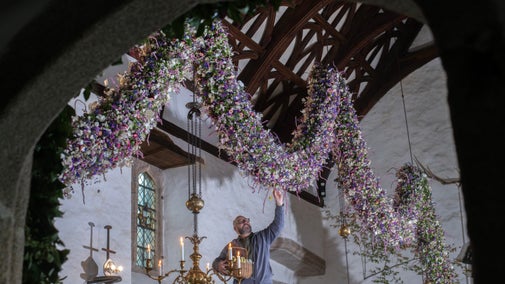
See our upcoming events happening at Cotehele, including seasonal trails, exhibitions, activities and more

Dogs are welcome to join you at Cotehele. There are miles of paths and loads of space where they can stretch their legs and bowls of clean water once they’re thirsty. Cotehele is a two pawprint rated place.

All-terrain Tramper hire at Cotehele, in partnership with Countryside Mobility, allows visitors to explore the garden and estate with ease. Advance booking essential.

A Tudor house with medieval roots, perched high above the River Tamar. Decorated inside with tapestries, arms and armour.
A Victorian mill and traditional workshops nestled in a wooded valley, beside the Morden stream.
Unique, varied and bursting with colour all year round, 14 acres of gardens and 12 acres of orchard to explore.
Once a busy working quay, Cotehele Quay is a gateway to the wider estate and our newly restored intertidal habitats.
Spans 1,300 acres and miles of footpaths. Discover woodland and fields, industrial ruins, flora, fauna and working farms.
Visit the Barn Café or The Edgcumbe at the Quay for drinks, snacks and meals and a Cornish cream tea.
A trip to Cotehele isn’t complete without visiting the Bull Pen Gallery, shop, plant centre and bookshop.
Celebrate Christmas with a festive day out to Cotehele. Step into the hall to adore this year's Garland, grab a festive hot drink and enjoy the lights along the path to the mill, join in with a festive sing song by the tree and visit Cotehele Mill for crafts for all the family.
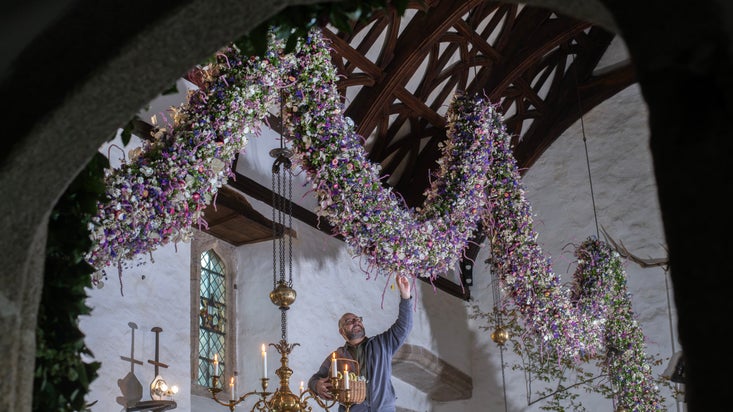
Cotehele house contains eclectic historic artefacts that tell many stories about the medieval building’s long history, from rare tapestries to whale jawbones.

Take a stroll around the 5.5 hectares of Cotehele's garden where you’ll discover terraced herbaceous borders, a lily pond as well as a medieval stewpond and dovecote.

Discover all the things to do on a family day out to Cotehele. Explore the garden and orchards and head out on an adventure around the estate. Find out what family-friendly events are coming up and how best to plan your day out at Cotehele with children in mind.

There's lots to discover at the Cotehele estate. Miles of pathways lead you through ancient woodland, past a historic chapel, and to an important Victorian quay.

Dogs are welcome to join you at Cotehele. There are miles of paths and loads of space where they can stretch their legs and bowls of clean water once they’re thirsty. Cotehele is a two pawprint rated place.


Tuck into a cream tea at one of Cotehele’s cafés, find an eco-friendly gift or plant at the shop, and discover local artists at The Bull Pen Gallery.
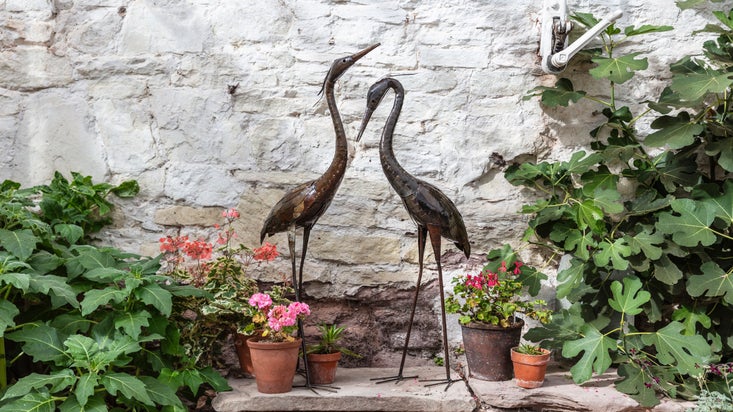
Explore the National Trust's Cotehele Estate on a circular walk and discover hidden places along the route that are a haven for wildlife in Cornwall.

A 2.3-mile circular walk from the Cotehele estate in Cornwall through Bohetherick Woods and along the River Tamar.

Starting at Cotehele Quay, this trail through the Danescombe Valley passes a number of relics from the area's rich mining history.

Discover wildlife-rich woods, meadows and orchards as you explore a lesser known corner of the Cotehele estate, the Burcombe Valley, land recently taken back under direct management by the National Trust.

Not only is Cotehele Quay a starting point to explore the many miles of footpaths around the Cotehele estate, the quay also provides an opportunity to get out onto the river for further adventures. Here you’ll find information on launch points, guidance for safe paddling and other opportunities to head out onto the water.

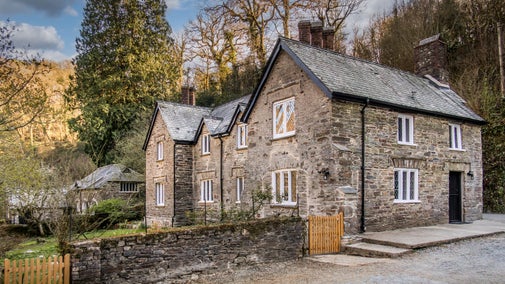
A woodland cottage by a stream on the Cotehele estate, near the Victorian watermill and quay.

This snug gate lodge, perched near the Tamar River on the Cotehele estate, is especially cosy in the evenings when the stove is lit and the shutters closed for the night.

A quiet and luxurious cottage, with access to Cotehele's house and garden.

An apartment in Cotehele’s atmospheric Tudor house, with stacks of historic charm and all-hours access to the gardens, river and estate.
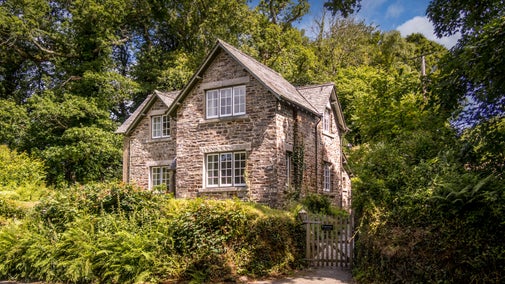
A pretty former gamekeeper’s cottage perched next to woodland on the Cotehele estate.
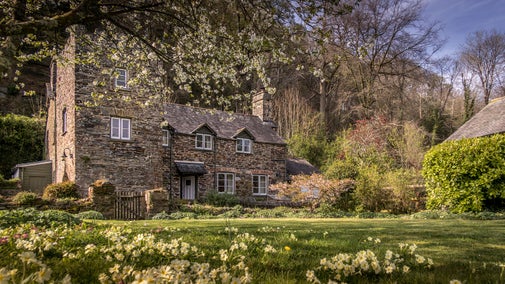
A unique house on the Cotehele estate with a tower room and stylish interiors.

A traditional whitewashed cottage in a tranquil corner on the Cotehele Estate.

A holiday cottage with a history, this cosy retreat is tucked into the valley on the Cotehele estate.
Take a piece of Cotehele's Mother Orchard home with you by grafting your very own apple tree!
Cotehele was the ancestral home to the Edgcumbe family for centuries. The Tudor house, perched high above the River Tamar, is decorated with tapestries, arms and armour, pewter, brass and old oak furniture. The interior tour has changed little over the years, although the furnishings were titivated as Cotehele continued to inspire its adoring owners.
Outside, explore the formally planted terraces, or lose yourself in the Valley Garden, which includes a medieval stewpond and dovecote and leads down to the river. Seek tranquillity in the Upper Garden or visit the two orchards planted with local apples and cherries.
From early spring flowers to herbaceous borders in high season, to the orchards in the autumn and snow drops in winter, you’ll find horticultural activity all year round.
In the 19th century local industries boomed and Cotehele Quay bustled with vessels loading and unloading cargo. Paddle steamers came upriver to see the Tamar Valley’s famous blossoming orchards and small boats carried market-gardening produce back down the river for sale at Devonport Market.
The restored sailing barge 'Shamrock' is moored at the quay where you’ll also be able to treat yourself to a Cornish 'jam-first' cream tea in the Edgcumbe. The Discovery Centre here tells the story of the Tamar Valley, offering a gateway to the wider estate and is just a short walk through the Morden valley to our sister property Cotehele Mill.
The team at Cotehele work hard to protect the wildlife that call the estate home, including dormice and bats, as well as maintaining their habitats to encourage population growth.

Cotehele relies on its dedicated gardeners and volunteers to care for the estate’s orchards, protecting them for the future and allowing resident wildlife to thrive.

Learn about how we're creating wetlands at Cotehele, Cornwall, which is helping control flood waters while providing a wildlife-rich environment.
Learn about the on-going work our team are doing to look after Cotehele Mill and the surrounding Morden Valley.
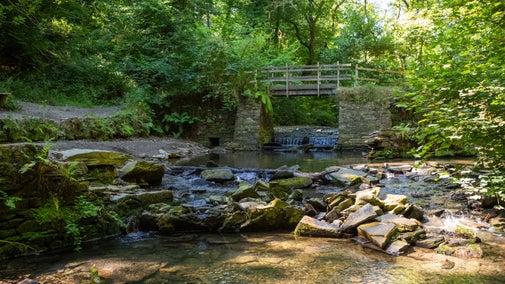
Uncover centuries of Cotehele’s history, from a medieval home, developed after the Battle of Bosworth to a family estate given to the National Trust after the Second World War.

Explore the objects and works of art we care for at Cotehele on the National Trust Collections website.

Cotehele has a team of more than 260 volunteers, who work in variety of roles across the estate, house and garden, and are always looking for more people to get involved.


Join today and help protect nature, beauty and history – for everyone, for ever. Enjoy access to more than 500 places with National Trust membership.
By sharing your email address you’re agreeing to receive marketing emails from the National Trust and confirm you’re 18 years old or over. Please see our for more information on how we look after your personal data.